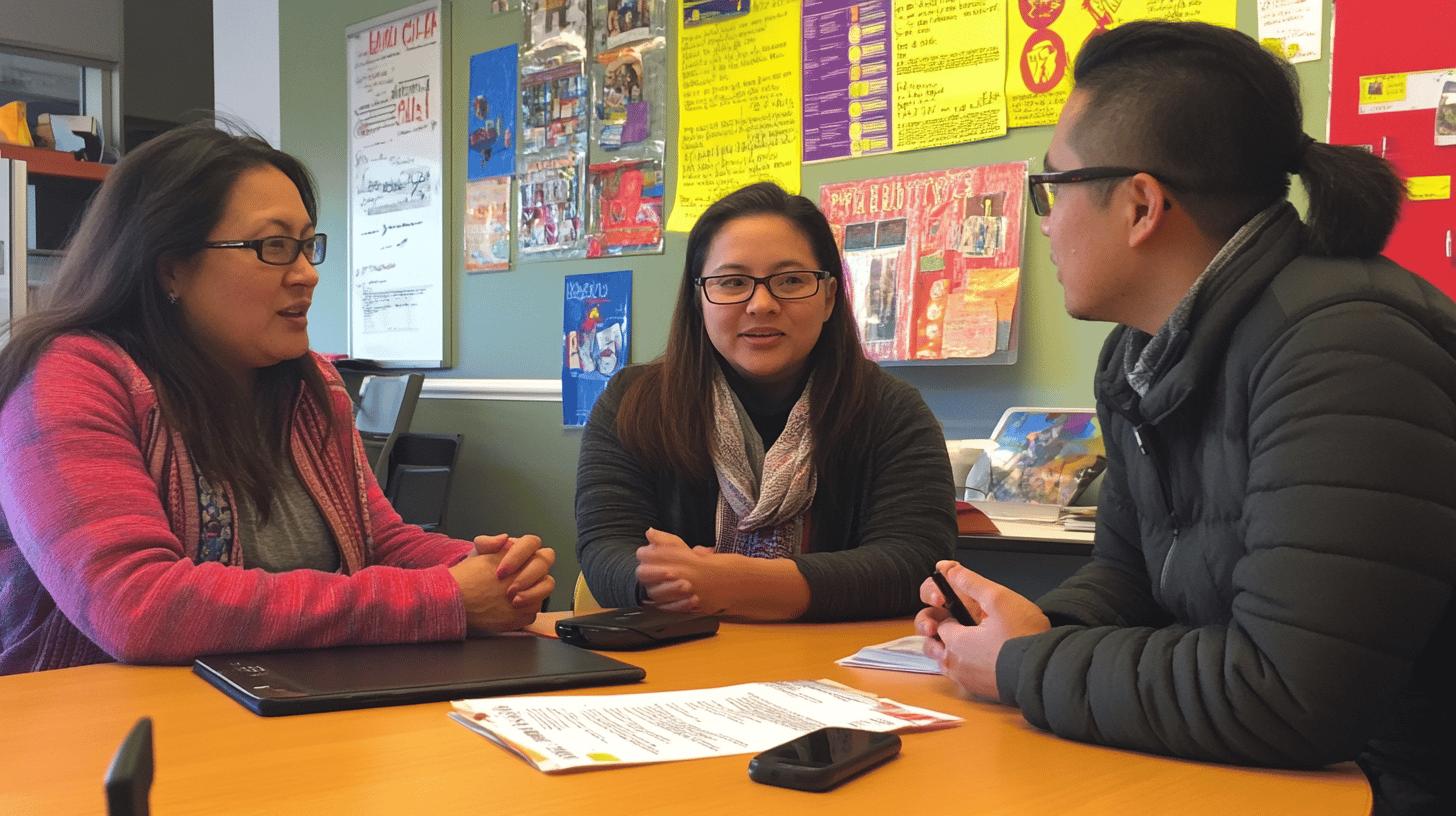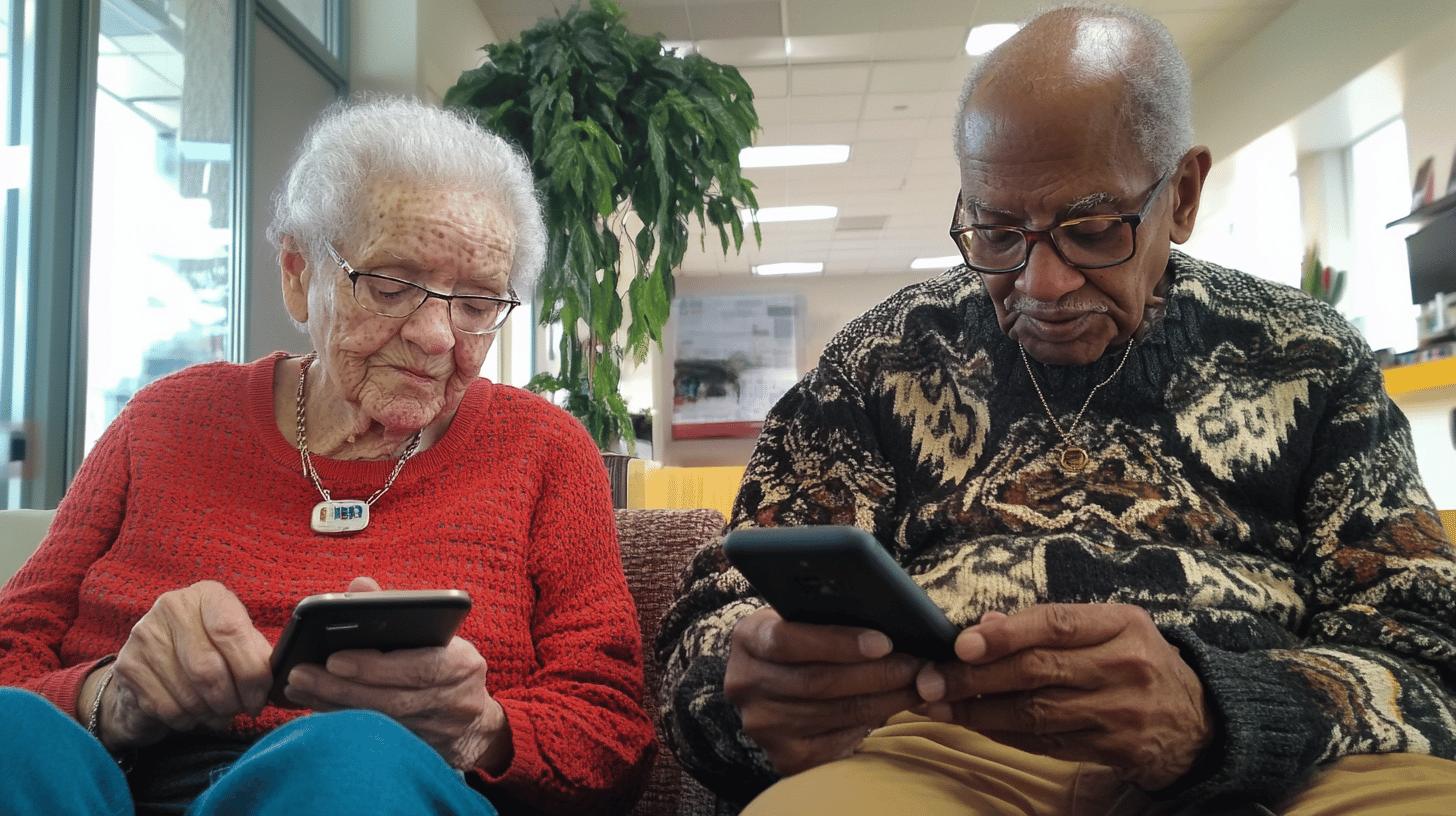Navigating the world of AAC funding can often feel like a daunting task. But with the right support and resources, it becomes a journey of opportunities.
This is where the Journey app plays a transformative role, connecting individuals with community experts who share effective strategies for securing AAC devices. From Medicaid coverage to private grants, understanding the funding landscape is crucial. The Northwest Augmentative Communication Society (NWACS) highlights multiple paths such as Medicaid, insurance, vocational rehabilitation, and school district resources—each with specific eligibility requirements. Journey not only helps users discover these options but also fosters community connections, providing guidance and inspiration from those who have successfully paved the way before. Dive into the article to unlock potential funding opportunities and see how community support can open new doors on your AAC journey.

Navigating the diverse landscape of AAC funding can be a complex endeavor. Funding options highlighted by organizations like the Northwest Augmentative Communication Society include Medicaid coverage, insurance approval under Durable Medical Equipment (DME), vocational rehabilitation programs, school district IEP services, and various non-profit and grant resources. Each funding source comes with specific eligibility criteria and application processes that require careful review and understanding.
The Journey app acts as a vibrant hub where individuals seeking AAC funding can connect with seasoned experts and like-minded peers. This safe and trustworthy environment supports rich interaction and mutual support, enabling users to share up-to-date strategies, experiences, and resources. By participating in focused discussions and accessing curated content, users gain critical insights that enhance their ability to secure funding effectively.
Key AAC funding opportunities include:
Journey’s integrated community features—customizable groups, searchable member directories, and robust content organization—encourage participation and foster belonging. By leveraging these tools, AAC users and their supporters can build meaningful connections that drive continuous growth and enrich their funding pursuits with practical guidance and encouragement.

Medicaid often serves as a central backbone for AAC funding, covering devices for eligible children when deemed medically necessary. Eligibility and coverage vary by state, making it crucial to understand your local Medicaid guidelines and application procedures. Many states require applicants to first seek funding through private insurance before Medicaid becomes an option as the payer of last resort.
State vocational rehabilitation programs offer invaluable support, focusing on empowering individuals to achieve career and independent living goals. These programs may provide funding for AAC devices when they are integral to vocational success. Each state’s program has unique criteria, so verifying eligibility early helps align expectations and streamline the process. School districts hold a legal responsibility to provide AAC devices if the Individualized Education Program (IEP) team determines the device is necessary for the student’s educational access. Engaging with the IEP team and advocating for AAC as a critical communication tool can unlock resources otherwise unavailable. This educational pathway often represents a primary funding avenue for children requiring AAC support.
To navigate these government and state funding sources effectively, follow these key steps:
The Journey app enhances this endeavor by offering a safe, trustworthy environment where families, educators, and professionals connect. Through Journey’s vibrant communities, users share timely updates, experiences, and strategies tailored to specific state programs and Medicaid guidelines. This mutual support fosters effective communication and empowers individuals to navigate complex funding landscapes with confidence.

Many insurance providers cover AAC devices under Durable Medical Equipment (DME) policies. Securing insurance approval typically requires navigating complex procedures, including submitting detailed medical documentation. Private grants from nonprofit organizations also present vital funding opportunities, especially for applicants who face insurance limitations or denials. These grants often have specific eligibility criteria and application timelines, so understanding these details is crucial for successful funding.
To enhance the chances of approval, applicants should prepare professional documentation such as letters of medical necessity or support from speech therapists and pediatricians. These documents provide critical evidence to justify the need for AAC devices. Combining insurance coverage efforts with grant applications forms a comprehensive strategy to access diverse funding sources, reducing financial barriers for AAC users.
Key actions for leveraging insurance and private grants include:
The Journey app serves as a rich community hub where individuals pursuing AAC funding can connect with seasoned users and experts. Within Journey’s safe and trustworthy environment, members share updates, sample documents, and strategies for dealing with insurance companies and grant applications. This vibrant, interactive platform fosters mutual support, enabling users to overcome funding challenges and access critical resources more effectively.
.png)
Applying for AAC funding can feel overwhelming, but breaking it down into clear, actionable steps makes this endeavor more fulfilling and effective. The process typically involves gathering essential documentation, submitting detailed applications, and following up diligently with various agencies. Success depends on a thorough understanding of eligibility criteria and careful preparation of supporting evidence, such as letters of medical necessity from speech therapists or pediatricians.
The first critical phase is determining eligibility. Different funding sources—whether state programs, insurance providers, or school districts—have specific guidelines that applicants must meet. Reviewing these guidelines early helps align expectations and identify the precise documents required. Next, applicants should gather all relevant medical and educational records, ensuring letters and evaluations clearly justify the need for AAC devices. This documentation forms the backbone of a strong application. Submission marks the next pivotal step. Following provider instructions meticulously and completing all required funding forms reduces the chance of delays or denials. After submission, proactive follow-up is essential. Contacting support agencies to confirm receipt and clarify any questions can keep the process moving forward. If funding is denied, applicants can appeal by submitting additional documentation and using sample appeal letters crafted by seasoned professionals. Throughout this journey, the Journey app acts as a vibrant hub, connecting applicants with experts and peer communities who share insights, offer encouragement, and provide resources to navigate each step with confidence.
Journey amplifies this process by providing a safe, trustworthy environment for individuals to interact with like-minded peers and seasoned experts. Its integrated tools enable users to discover detailed funding guides, share updated application strategies, and participate in focused discussions tailored to specific funding sources. By fostering a vibrant community dedicated to AAC funding, Journey supports continuous growth, enriches learning experiences, and enhances the overall success of every applicant’s funding pursuit.

Real-world experiences from AAC users highlight the crucial role of guidance from seasoned professionals and supportive peers in overcoming funding challenges. Many success stories emphasize the importance of detailed documentation and persistent follow-up with funding agencies. These testimonials reveal that securing AAC funding is often a long-term endeavor requiring strategic communication and advocacy. Individuals who engage with well-maintained communities gain access to a rich reservoir of ideas and resources that enhance their understanding and ability to navigate complex funding landscapes.
Users consistently report that sharing their journey with like-minded individuals fosters mutual encouragement and continuous growth. For example, overcoming documentation hurdles often demands collaboration and insight into what evidence best supports funding applications. Effective appeals to insurance companies require strategic letters and timely responses, while success with vocational rehabilitation programs depends on aligning goals with state guidelines. Positive experiences with grant applications frequently involve discovering lesser-known opportunities and learning from others’ firsthand accounts.
The Journey app serves as a vibrant hub where AAC users and their supporters participate in focused discussions and share updates on funding strategies. Its safe and trustworthy environment enables users to interact authentically, retaining a sense of belonging while accessing robust tools that organize shared knowledge and experiences. Journey’s integrated features—such as customizable groups, searchable member directories, and AI-powered content curation—enhance discoverability and foster seamless interaction. This dynamic community support system empowers individuals to implement strategies that increase their chances of securing AAC funding effectively.

School districts serve as a central resource for AAC devices through the Individualized Education Program (IEP) process. When an IEP team determines that an AAC device is critical for a child’s educational access, the district is responsible for providing the necessary communication technology. This pathway is especially vital for children with autism and other developmental challenges, ensuring they receive devices tailored to their learning and communication needs.
Non-profit organizations and specialized grant programs play a crucial role in supporting autistic individuals, non-verbal users, and elderly populations. These programs often offer funding opportunities designed to meet the unique requirements of these groups. For example, dedicated autism communication support grants focus on providing AAC devices that cater to sensory preferences and communication styles typical within the autism community. Similarly, programs for non-verbal individuals and elderly users emphasize accessibility and ease of use to enhance quality of life.
Targeted funding avenues that cater to these special populations include:
The Journey app enriches this landscape by enabling users to participate in vibrant, focused community groups tailored to these specific populations. Within Journey’s safe and trustworthy environment, individuals and families share experiences, resources, and strategies that address the granular challenges of AAC funding for diverse needs. Journey’s integrated tools for organizing content and facilitating meaningful discussions foster a sense of belonging and continuous growth, empowering users to implement effective funding strategies collaboratively.

Securing AAC funding often involves navigating a complex landscape filled with paperwork, delays, and shifting eligibility criteria. Many individuals face challenges such as incomplete documentation or delayed responses from insurance companies and funding agencies. These obstacles can stall progress and cause frustration, making persistence and strategic follow-up essential to success.
One of the most critical hurdles is managing stringent documentation requirements. Funding sources demand detailed medical and professional letters that clearly justify the need for AAC devices. Missing or insufficient documents can lead to denials or long wait times. Additionally, delays in approval processes are common, requiring applicants to actively track their submissions and communicate regularly with agencies to keep their cases moving forward. Coordinating responses between multiple funding bodies—such as insurance providers, Medicaid, and school districts—adds another layer of complexity that can overwhelm even seasoned applicants.
Key challenges include:
The Journey app serves as a central hub where AAC users and their supporters can engage with a vibrant community facing similar challenges. Within Journey’s safe and trustworthy environment, members share innovative solutions, sample letters from authorized experts, and practical advice on managing insurance claims and funding requirements. This rich interaction fosters a sense of belonging and continuous growth, empowering users to implement effective strategies and overcome obstacles with confidence. Journey’s robust tools for organizing discussions and resources enhance discoverability, making it easier to access relevant guidance and connect with like-minded individuals committed to supporting each other’s funding journeys.

Organizations like the Northwest Augmentative Communication Society and various state agencies provide detailed pathways to secure AAC funding assistance. Alongside these formal resources, online forums and community groups offer vital peer support, sharing practical experiences and insights. The Journey app stands out as an innovative platform that blends these elements, fostering authentic social interactions and collaborative knowledge sharing among AAC users and their supporters. It offers a safe, trustworthy environment where individuals can engage meaningfully, exchanging up-to-date funding strategies and encouragement.
Journey’s design centers on building genuine connections by enabling users to create and customize communities tailored to their interests. With features like customizable member profiles, searchable directories, and focused group chats, Journey cultivates a vibrant hub for interaction and resource exchange. These tools enrich the AAC funding journey by streamlining access to expert advice, organizing relevant content, and facilitating ongoing discussions that empower members to implement effective funding strategies over the long term.
Key benefits of using Journey for AAC funding support include:
Journey’s integrated features and AI-powered assistance not only enhance discoverability and participation but also safeguard a respectful and engaging space. By nurturing a sense of belonging and continuous growth, Journey helps individuals transcend the challenges of AAC funding, turning a complex endeavor into a collaborative and fulfilling experience.
Exploring AAC funding presents numerous options for obtaining necessary communication devices. By navigating Medicaid, insurance policies, vocational rehabilitation, and school district resources, individuals gain access to vital support. Each funding avenue has specific eligibility criteria and requirements; understanding these details is key. Additionally, seeking private grants and utilizing nonprofit organizations can uncover further opportunities.
Overcoming challenges within the AAC funding journey often involves strategic planning and perseverance. This can mean organizing documentation meticulously and following up consistently with funding agencies. Real-life case studies show that persistence pays off, especially when engaging with professional guidance and community support.
The Journey app enhances community engagement by connecting users with experts and sharing real-world applications and tips. This platform empowers individuals to navigate these funding landscapes efficiently. By fostering genuine connections and providing spaces for resource sharing, the Journey app ensures access to valuable support networks, which play a crucial role in successful AAC funding outcomes.
AAC devices are often funded through Medicaid, insurance approval as Durable Medical Equipment (DME), vocational rehabilitation programs, school district IEP services, and nonprofit or grant resources.
Insurance may cover AAC devices under the DME category. It's crucial to contact your insurance provider for specific coverage details and necessary documentation requirements to facilitate approval.
AAC stands for Augmentative and Alternative Communication. It encompasses devices and methods used to aid those with speech or communication difficulties.
AAC typically includes symbols, aids, techniques, and strategies. These components work together to enhance communication for individuals with varying needs.
To obtain an AAC device through insurance, contact your provider to confirm coverage, ensure proper medical documentation, and follow the required application process. Engaging with community experts can provide valuable insights.
Schools can access AAC funding through IEP services. If a device is deemed necessary for educational purposes, school districts are responsible for providing the required support.
AAC funding grants are often available through nonprofit organizations designed to help individuals and schools secure devices. These grants typically require detailed applications and supporting documentation.
The Journey app is a pivotal tool connecting users with community experts and peers for shared funding strategies and support, enhancing the journey of securing AAC funding.
Challenges include navigating complex documentation, managing approval delays, and coordinating between multiple agencies. Detailed follow-up and using sample letters from professionals can aid in overcoming these obstacles.
Engaging with communities via the Journey app offers direct access to experts, shared application tips, and an expansive support network that enhances funding success and sustainability.